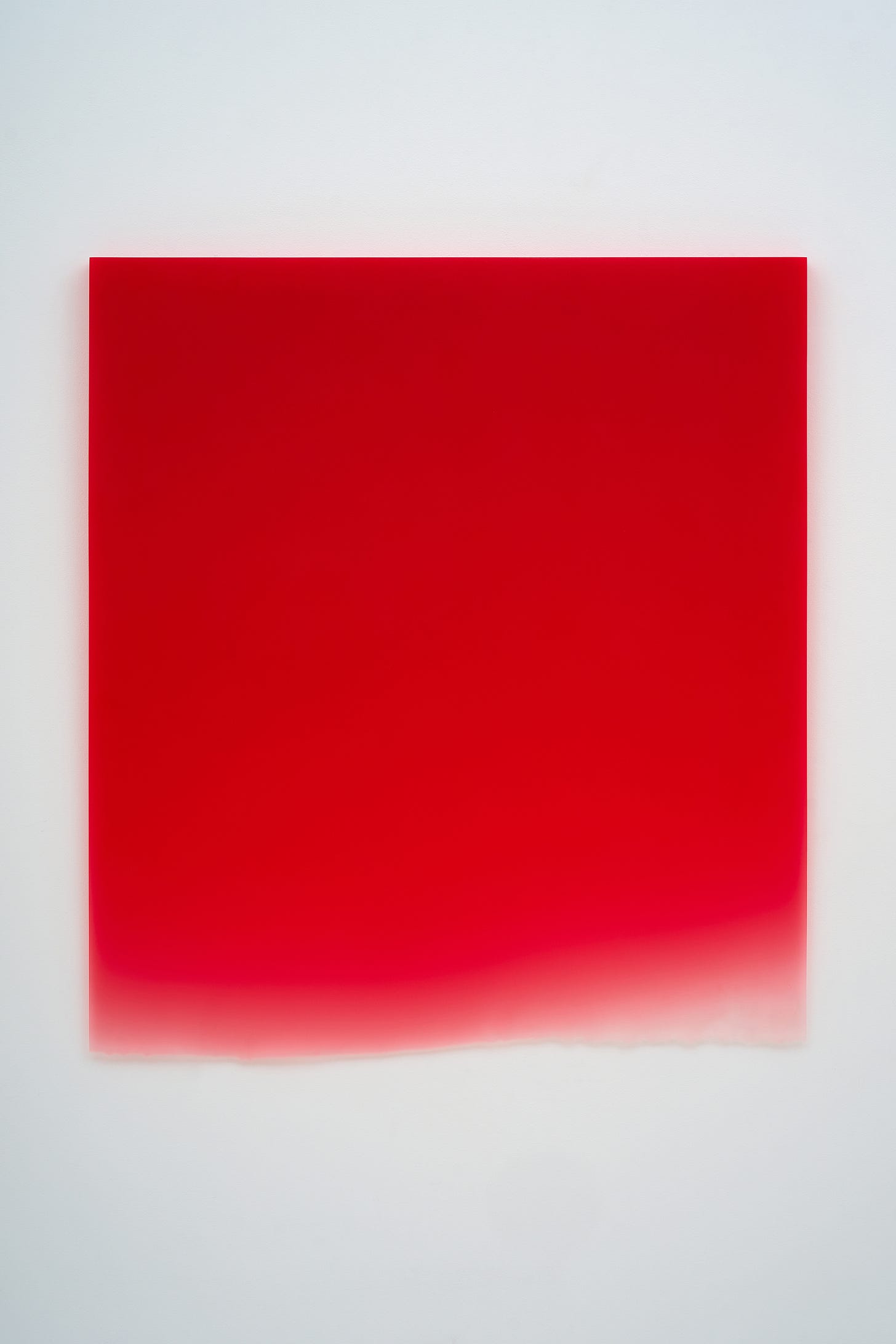
Hong Kong–Pace is pleased to present an exhibition of vibrant sculptures by the pioneering Light and Space artist Peter Alexander at its Hong Kong gallery. Running from February 2 to March 14, this show will bring together works created by the artist during the last decade of his life. A hugely creative period of his career, these final years brought new experimentations with color and form—including his needle-shaped sculptures—that will be on full view in Pace’s upcoming show. This will be the first-ever exhibition dedicated to Alexander’s work to be presented in Hong Kong and, more broadly, in all of Asia.
Born in Los Angeles in 1939, Alexander rose to prominence in the 1960s with his cast polyester resin sculptures. Having nurtured a lifelong love of surfing, he used resin to fix his boards for many years. Alexander’s decision to utilize resin as an artistic material in the early 1960s was something of an epiphany. He had poured the material into a Dixie Cup to seal his surfboard but found that over time the resin hardened into a translucent circle. This realization heralded the creation of Alexander’s iconic polyester resin sculptures that would position him as a key figure in the Los Angeles art scene and a vanguard of the California Light and Space movement, which also includes James Turrell, Robert Irwin, and other figures in Pace’s program.
Throughout his life and career, Alexander found inspiration for his art through a multitude of sources, including the colors, forms, and geometries that make up the landscape of his native Southern California—from glowing sunsets and crashing waves to imposing mountains and deep valleys. The relationship between color and light—and the phenomenological and perceptual nuances of that relationship—is central to any experience of Alexander’s translucent, meditative sculptures. A believer in the power of all that is small or quiet, the artist often spoke of the intimacy of his sculptures, which he hoped each viewer would engage with on a personal, individual level.
Though he remains best known for his sculptures, Alexander’s practice also spanned painting, drawing, lithography, and Polaroid photography. His fascination with the science of color was an enduring part of his practice, and his investigations into and experimentation with color are throughlines in all his work. In the 1970s, he stopped using polyester resin for his sculptures due to its toxicity, focusing instead on painting, drawing, and printmaking. He returned to the material in 2010 when he began working with polyurethane, a shift that enabled him to express color in his sculptures more clearly and vividly than ever before.
Pace’s upcoming exhibition in Hong Kong follows a major presentation of Alexander’s work at its New York gallery in 2022. Featuring sculptures created by the artist between 2012 and 2020, the year of his passing, this show will bring together three large-scale, freestandingNeedle works, the last sculptural shape he explored in his practice, along with a group of ethereal, small-scale block, box, and wedge sculptures. It will also include several dynamic wall-mounted works that engage heavily with questions of perception and perspective. Replete with bold colors and shapeshifting forms, this presentation will offer a holistic view of Alexander’s prolific final years.
Over the course of his career, Alexander showed his work at the Los Angeles County Museum of Art; the J. Paul Getty Museum, Los Angeles; the Museum of Contemporary Art, Los Angeles; the Museum of Modern Art, New York; the San Diego Museum of Art; the San Francisco Museum of Modern Art; the Centre Pompidou, Paris; and other international institutions. His work can be found in many of these collections as well as the Metropolitan Museum of Art, New York; the Walker Art Center, Minneapolis; the Santa Barbara Museum of Art, California; and other major museums.



